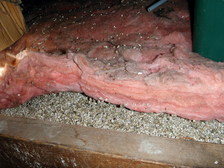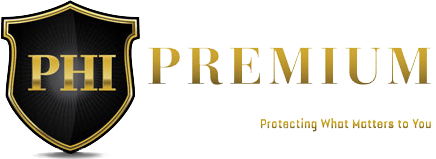Vermiculite Insulation
Jul. 6, 2016Should You Be Worried?

As a home inspector, one of the major things I look for in houses built between 1920 and 1990 is Vermiculite insulation. More common in older houses, this insulation is a loose-fill type that homeowners used to purchase in bags and pour between the joists of the attic floor - and sometimes down into the walls in homes that have balloon-type framing.
Vermiculite is a naturally-occurring mineral. When it is heated, it expands up to 30x its original size and creates an effective fire-resistant, light-weight insulation material. In appearance, it looks a bit like popcorn and is a brown-grey or yellow-gold color.



The majority of Vermiculite insulation in Canada came from a mine in Libby, Montana under the trademark name Zonolite. Unfortunately, that mine also contained a deposit of asbestos (another naturally-occurring mineral), which contaminated the Vermiculite mined from that site, resulting in approximately 2-3% asbestos content in the Vermiculite. That doesn't sound like much, and it isn't; but here's the catch. The type of asbestos that contaminated the Vermiculite is Tremolite asbestos, which is up to 10x more carcinogenic than regular Chrysotile asbestos. What makes it worse is that asbestos in Vermiculite insulation is readily friable, which means that it easily becomes airborne due to its loose, dust-like form.
Does it really matter, if it's just in the attic?
Many would argue that the attic space is not a living space, so contamination with asbestos or mold is irrelevant. It is true that most of the time, air will be entering the attic from the living space due to convection (called "stack effect"), and not the opposite - but keep in mind that any situation in the home that would create negative air pressure can draw air into the house from the attic space.
What creates negative air pressure? Anything that burns fuel (fireplaces, furnaces, water heaters, etc) if there is inadequate combustion air available, and any kind of exhaust fan if there is inadequate make-up air from outside. This is most likely to occur in winter months, when all these appliances will be running simultaneously, and all the doors and windows are shut.
Another issue to consider is whether or not you might want to do work in the attic at some point - say, for example, you want to install some pot-lights in the kitchen below... that means a contractor (who is hopefully certified to work with asbestos) is going to be disturbing the insulation in the attic, getting asbestos on his clothes, and then walking through your house.
What are the health effects?
Typically, health effects from exposure to asbestos will depend on: 1) The level of exposure and 2) the duration of exposure. Asbestos has been known to cause types of lung cancer as well as Asbestosis, which is scarring of lung tissue that reduces lung volume and inhibits the efficient transfer of oxygen into the blood stream.
Most serious cases are caused by long-term exposure to airborne asbestos - airborne being the key word. Inhalation of asbestos fibers is the only reason asbestos is dangerous; if the asbestos fibers are not airborne, they will not hurt you.
What should I do if I have Vermiculite in my attic?
Leave it alone, and do not go in the attic. Regular dust masks do not work with asbestos. I recommend hiring a professional such as myself to take samples and send them to a lab for analysis to verify whether or not it does contain asbestos - sometimes it will not. If it does, professional removal of the Vermiculite is always the safest option, which costs approximately $10-12 per square foot; but asbestos abatement professionals can provide other lower-cost alternatives to at least reduce the risk.
Written By:
DONOVAN ILLIG
Home Inspector & Residential Environmentalist
Premium Home Inspections Ltd.
250-617-3378 | donovan@premiumhi.net
CPBC License #71217



